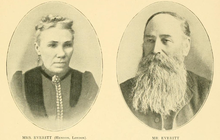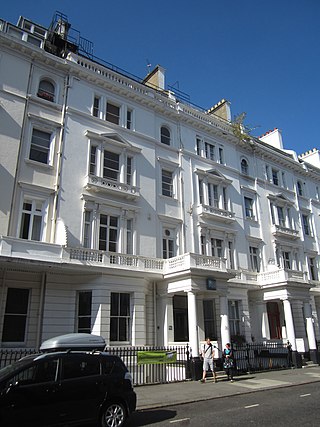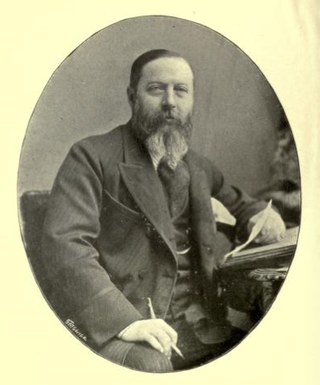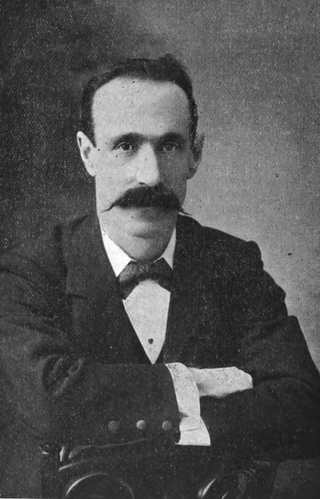
The Spiritualist Association of Great Britain (the SAGB) is a British spiritualist organisation. It was established on 10 July 1872. [2] [3]

The Spiritualist Association of Great Britain (the SAGB) is a British spiritualist organisation. It was established on 10 July 1872. [2] [3]
The SAGB grew out of the Marylebone Spiritualist Association (founded 1872). The story of the association's early struggles "to propagate spiritual truths in the Marylebone area of London" is told in an SAGB publication, "One Hundred Years of Spiritualism", which also states that Queen Victoria allegedly held several séances after the death of the Prince Consort. [4]
A famous and outspoken supporter of the SAGB was Arthur Conan Doyle, who (according to his obituary in the New York Times ) in later years "often expressed a wish that he should be remembered for his psychic work rather than for his novels". [5] [6] [7]
Serving the principles of the Spiritualist movement, and open to members and non-members alike, the SAGB offers rooms where the public, whether Spiritualist or not, may sit for readings with spirit mediums. Sunday services are free and include a public Demonstration of mediumship. Private 30-minute sittings are available daily during opening hours for a fee. They may be recorded if the client wishes. The nature of the sittings is strictly limited by a policy which states that the mediums are "to try to provide evidence of survival [of the spirit after death] and not to predict the future." [8]
The library of the SAGB was named after the spiritualist William Crookes. [9]
The SAGB's current headquarters is at the Victoria Charity Centre at 11 Belgrave Road, London. [1] [10] [11]
As an organization, the SAGB describes their goals as:
To offer evidence to the bereaved that man survives the change called death and, because he is a spiritual being, retains the faculties of individuality, personality and intelligence, and can willingly return to those left on earth, ties of love and friendship being the motivating force. To offer spiritual healing to those suffering from dis-ease, whether in mind, body or spirit, in a warm and loving environment. With both of these objectives in mind, to offer only the best and highest so that those on both sides of the veil can progress in a truly spiritual sense. [10]
The SAGB and its mediums abide by the following seven principles of belief:

The SAGB historic headquarters at 33 Belgrave Square was sold in 2010 for 6 million pounds. It relocated to a new home in the Victoria Charity Centre at 11 Belgrave Road, London, near Victoria Station. [1] [10] [11] In 2013, the Charity Commission for England and Wales launched an investigation in to the sale of the property, after discovering that the subsequent owners sold the property for 21 million pounds shortly after purchasing it from the SAGB. The Committee published a report of its findings on 30 March 2017. The Commission's report concluded SAGB's trustees had failed to fulfil their legal duties and responsibilities towards the charity, and that ‘the failures and breaches were not minor or technical in nature’ but ‘amount to basic and serious mismanagement’. [16] The charity responded to the Commission's report claiming that they "could not have foreseen what would happen in future" regarding property prices. [17] S.A.G.B headquarters are now at 341,Queens town Road, Battersea, London SW8 4LH

Spiritualism is a social religious movement primarily popular in the nineteenth and early twentieth centuries according to which an individual's awareness persists after death and may be contacted by the living. The afterlife, or the "spirit world", is seen by spiritualists not as a static place, but as one in which spirits continue to evolve. These two beliefs—that contact with spirits is possible, and that spirits are more advanced than humans—lead spiritualists to the belief that spirits are capable of providing useful insight regarding moral and ethical issues, as well as about the nature of God. Some spiritualists speak of a concept which they refer to as "spirit guides"—specific spirits, often contacted, who are relied upon for spiritual guidance. Emanuel Swedenborg has some claim to be the father of spiritualism.
A spiritualist church is a church affiliated with the informal spiritualist movement which began in the United States in the 1840s. Spiritualist churches are now found around the world, but are most common in English-speaking countries, while in Latin America, Central America, Caribbean and Sub-Saharan Africa, where a form of spiritualism called spiritism is more popular, meetings are held in spiritist centres, most of which are non-profit organizations rather than ecclesiastical bodies.

The Spiritualists' National Union (SNU) is a Spiritualist organisation, founded in the United Kingdom in 1901, and is one of the largest Spiritualist groups in the world. Its motto is Light, Nature, Truth.

The College of Psychic Studies is a non-profit organisation based in South Kensington, London. It is dedicated to the study of psychic and spiritualist phenomena.
This article provides a selected list of fictional stories in which Spiritualism features as an important plot element. The list omits passing mentions.

William Hope was a pioneer of so-called "spirit photography". Based in Crewe, England, he was a member of the well known spiritualists group, the Crewe Circle. He died in Salford hospital on 8 March 1933.

In spiritualism, ectoplasm, also known as simply ecto, a substance or spiritual energy "exteriorized" by physical mediums. It was coined in 1894 by psychical researcher Charles Richet. Although the term is widespread in popular culture, there is no scientific evidence that ectoplasm exists and many purported examples were exposed as hoaxes fashioned from cheesecloth, gauze or other natural substances.
The American Society for Psychical Research (ASPR) is the oldest psychical research organization in the United States dedicated to parapsychology. It maintains offices and a library, in New York City, which are open to both members and the general public. The society has an open membership, anyone with an interest in psychical research is invited to join. It maintains a website; and publishes the quarterly Journal of the American Society for Psychical Research.
Estelle Roberts was a British Spiritualist medium.

William Stainton Moses was an English cleric and spiritualist medium. He promoted spirit photography and automatic writing, and co-founded what became the College of Psychic Studies. He resisted scientific examination of his claims, which have generally been demolished.
Spiritualism is a metaphysical belief that the world is made up of at least two fundamental substances, matter and spirit. This very broad metaphysical distinction is further developed into many and various forms by the inclusion of details about what spiritual entities exist such as a soul, the afterlife, spirits of the dead, deities and mediums; as well as details about the nature of the relationship between spirit and matter. It may also refer to the philosophy, doctrine, or religion pertaining to a spiritual aspect of existence.

Sir Arthur Ignatius Conan Doyle was a British writer and physician. He created the character Sherlock Holmes in 1887 for A Study in Scarlet, the first of four novels and fifty-six short stories about Holmes and Dr. Watson. The Sherlock Holmes stories are milestones in the field of crime fiction.

Alexandr Nikolayevich Aksakov was a Russian writer, translator, journalist, editor, state official and psychic researcher, who is credited with having coined the term "telekinesis". While living in Germany with his wife and publishing his writings there, he began to spell his name as Alexander Aksakof to accommodate the German spelling style, and this is the name by which he is most known outside of Russia.

Joseph Francis Rinn (1868–1952) was an American magician and skeptic of paranormal phenomena.

Charles Bailey (1870–1947) was an Australian apport medium who was exposed as a fraud.

James Martin Peebles was an American physician, prolific author and organizer of many professional, medical, and psychic/spiritualist religious associations.

George Vale Owen was a clergyman of the Church of England and one of the best-known spiritualists of the early twentieth century.

Thomas Everitt (1823–1905) and Mrs Thomas Everitt (1825–1915) were prominent British spiritualists.
John Arthur Hill, best known as J. Arthur Hill, was a British psychical researcher and writer.

Spiritualist art or spirit art or mediumistic art or psychic painting is a form of art, mainly painting, influenced by spiritualism. Spiritualism influenced art, having an influence on artistic consciousness, with spiritual art having a huge impact on what became modernism and therefore art today.